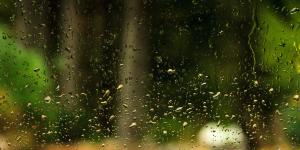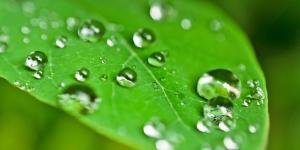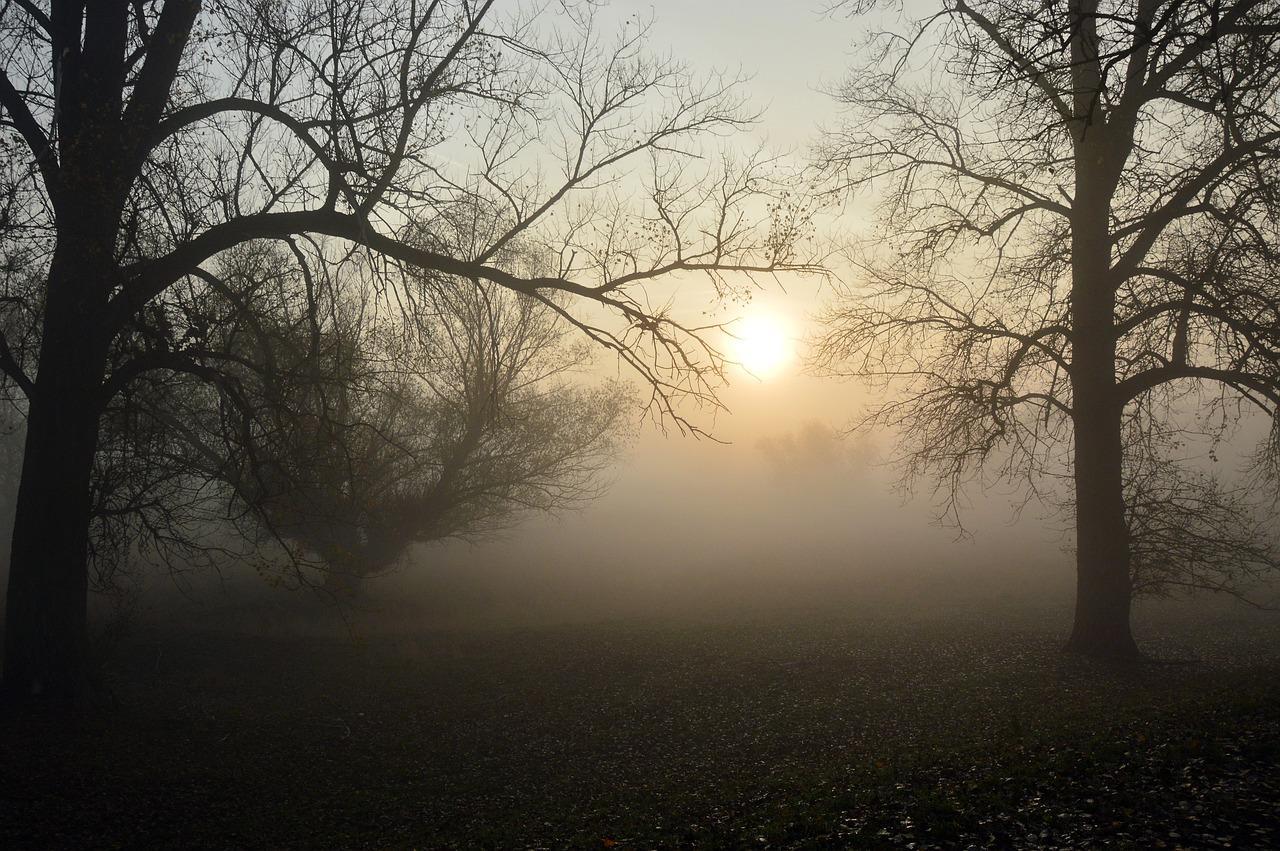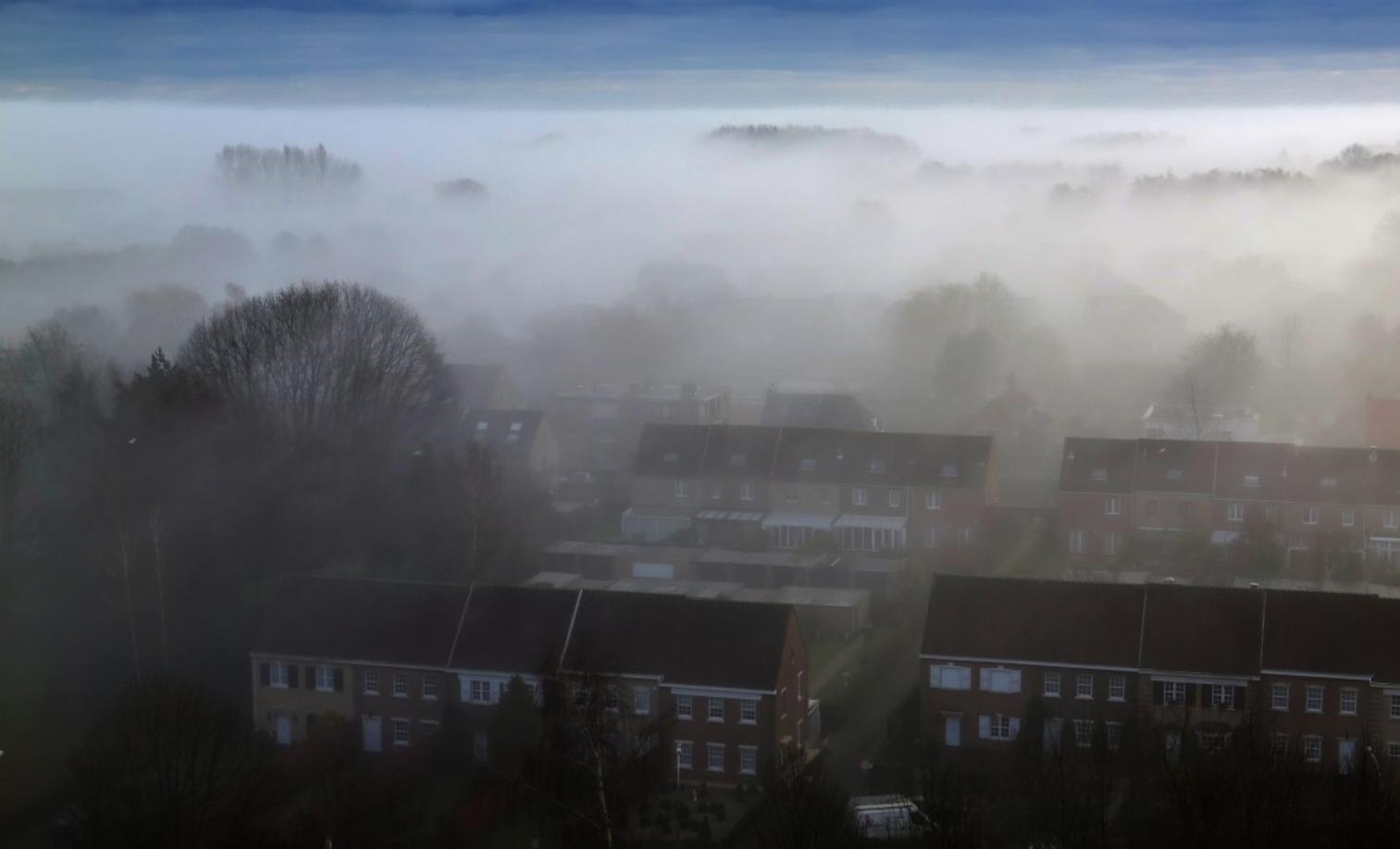Different Types of Fog


Fog is a weather phenomenon that is essentially a low-flying cloud. This is because it is an aerosol of water or ice droplets that moves close to the Earth's surface. It can be a very evocative phenomenon, either creeping over rolling hills in the countryside or descending ominously over a cityscape. While the essential formation of fog is due to the same occurrences, it doesn't mean all fog is the same.
At thedailyECO, we discover the different types of fog formation. We also provide some general information on what factors determine the type of fog and the difference between atmospheric fog, haze and mist.
What is fog?
Fog is a meteorological phenomenon that consists of the suspension of tiny water droplets in the air very close to the earth's surface. These tiny water particles are dispersed in the atmosphere, reducing visibility and creating a feeling of opacity in the environment. The denser the dispersion of water droplets, the greater the reduction in visibility.
Fog forms when air cools and reaches its dew point. This is the temperature at which water vapor in the air condenses into liquid droplets. This usually occurs when humid air comes into contact with cold surfaces, such as soil or water. Fog is most common when the temperature drops such as during the night and in the early hours of the morning. This is especially the case in areas near bodies of water such as rivers, lakes or seas.
Fog can vary in density and duration. It can be a light haze that barely affects visibility or a dense fog that reduces vision to only a few meters. This phenomenon can have a significant impact on driving and boating, as it drastically reduces visibility. This makes the lights of road vehicles or boats much less effective.

How does fog form?
It is not uncommon for fog to appear during the colder months of fall and winter. It can also occur during the warmer months when there is a temperature drop such as on an early summer morning. During these times, our visibility decreases. This results in a landscape of dull colors and an opaque atmosphere that prevents us from seeing into the distance.
The effect of fog is similar to that of being inside a cloud. The outside world becomes harder to see. However, when inside the fog, we may not even realize we are surrounded by condensed water vapor.
Fog is created when water vapor in the atmosphere condenses, forming small water droplets that are too light to overcome air resistance. For this to occur, water vapor must come into contact with a stream of cold air. This process causes the vapor to condense and transform into water droplets, resulting in the formation of fog.
The formation of fog is a similar process to how raindrops arise. Fog requires the presence of small solid particles to coalesce and form. As a result, it is common to find fog along the beach in the morning hours, since the air is colder and the salt suspended in the air serves as a condensation nucleus. This allows water vapor to take the form of droplets. In urban areas, fog forms when water vapor meets specks of dust or pollutants.
The creation of fog depends on environment and location. Variables such as wind, temperature, humidity and cloud cover can affect fog formation. When the humidity in a specific area is high, the likelihood of fog forming increases due to the greater amount of water vapor present in the atmosphere. The presence of wind in a region can make fog formation difficult. It will displace water vapor and hinder its ability to freeze around a central core.
Learn more about the difference between weather and climate in our related article.
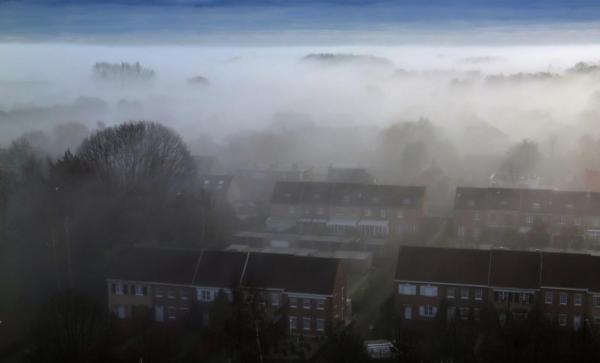
Types of fog
There are several types of atmospheric fog. The reason for the different forms of fog is due to variations of the specific meteorological conditions. Types of fog include:
- Radiation fog: this type of fog forms on clear, windless nights when the Earth's surface cools rapidly due to the infrared radiation it emits into space. The air near the surface cools and condenses water vapor, creating a fog that spreads from the ground upward. It usually dissipates as the sun heats the surface during the day.
- Advection fog: occurs when warm, moist air moves over a colder surface. This can be a cold water current or a cold land surface, such as in coastal regions. Contact between warm, humid air and the cold surface causes condensation of water vapor in the form of fog. It can be persistent and last several hours or even days.
- Evaporation fog: also known as steam fog, it forms when relatively cold air passes over a warmer water surface, such as a lake or river. The warmer water evaporates and rises into the colder air, condensing into small droplets of fog. It is often seen on cool mornings over bodies of water. When it occurs in coastal regions, it is sometimes known as ‘sea smoke’.
- Mixing fog: occurs when two air masses with different temperatures and humidity mix. Warmer, more humid air cools upon contact with colder air, resulting in the formation of fog. It is common in mountainous regions.
- Smog: forms when smoke particles, such as those produced by forest fires or the burning of biomass, mix with humid air. These particles act as condensation nuclei, which can lead to the formation of small fog droplets. It is a form of pollution which results in various types of environmental impact.
- Freezing fog: this occurs when the atmospheric temperature is below freezing. Although the water droplets in the air are liquid, they turn into ice when they touch surfaces. Someone walking through freezing fog can become covered in tiny ice crystals quite quickly.
- Ice fog: this is similar to freezing fog, but the atmospheric temperature is even lower. It is so low that the water droplets in the air turn into very small ice crystals. These ice crystals can remain suspended for various periods of time. It is more common in polar regions or areas of very high latitude. A hail fog can occur after a hailstorm, but this is usually very thin, very close to the ground and of a short duration.
Types of fog due to typography
So far, the different types of fog formation occur due to temperature and movement. However, the surface over which the fog forms is also very important. This can cause the following types of fog:
- Ground fog: a form of radiation fog which stays low to the ground and does not touch any overhead clouds. It can be so low that we can walk through it and it only reaches our ankles.
- Upslope fog: as the name suggests, this occurs when wind blows up a slope and cools into water droplets as it cools. As the fog rises, it can cool into a type of freezing fog. It is also known as hill fog.
- Valley fog: another type of radiation fog, it occurs inn valleys which are often protect from the winds due to the valley sides. This is
Discover more about how different weather phenomena are formed with our article on what is the cause of the Coriolis effect?
Difference between fog, haze and mist
Although fog, haze and mist are closely related concepts, there are important differences between them. We are going to establish the differences which are determined by their density, formation and potential danger they may cause:
Fog
- Density: fog is the densest and thickest of the three. It can reduce visibility to less than 1 kilometer, often even just a few meters.
- Formation: fog forms when air cools and reaches its dew point, leading to the condensation of water vapor into small droplets. It is most common during clear, windless nights, when the surface cools quickly.
- Hazard: fog can have a significant impact on driving and navigation as it dramatically reduces visibility and may require the use of special lights and extra caution.
Haze
- Density: haze is less dense than fog and generally allows visibility of 1 to 2 kilometers. Haze is lighter and less opaque than fog.
- Formation: haze forms similarly to fog, with the condensation of water vapor into small droplets, but is usually less dense and persistent. It does, however, also contain very small particulate matter in addition to water.
- Hazard: can reduce visibility on the road, but is generally less dangerous than dense fog in terms of visibility. It can be more dangerous if the particulate matter it contains is harmful to our health.
Mist
- Density: mist is the least dense of the three and generally allows visibility of more than 2 kilometers. It is the lightest and least disturbing to vision.
- Formation: mist consists of water particles smaller than fog. It often forms over bodies of water and is due to the evaporation of water which is then suspended in the air in the form of small particles.
- Hazard: mist has minimal impact on visibility and is usually less of a concern in terms of road or maritime safety.
Discover more about one of these visibility-reducing phenomena by reading our article on what is haze weather?
If you want to read similar articles to Different Types of Fog, we recommend you visit our Meteorological phenomena category.



